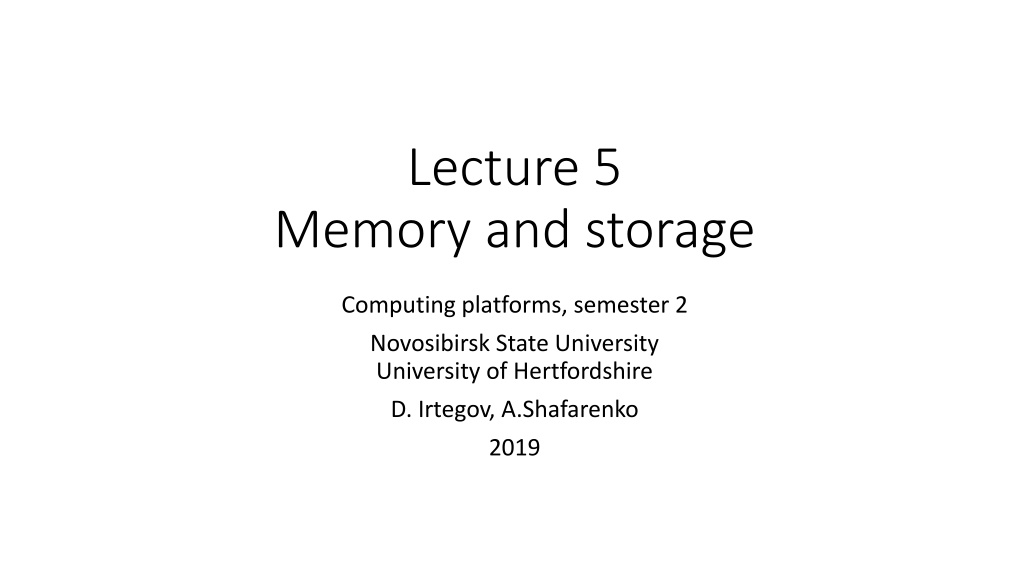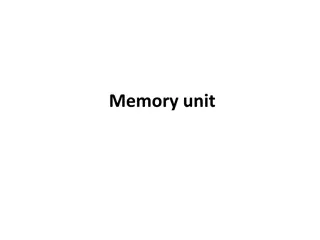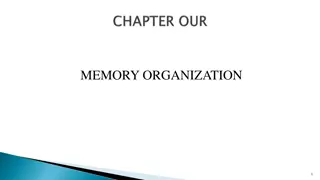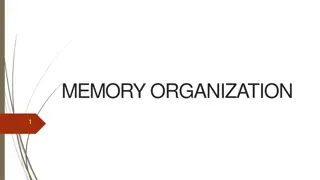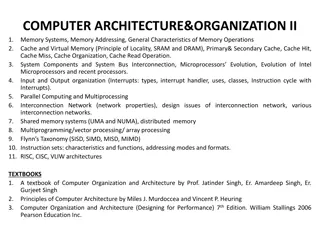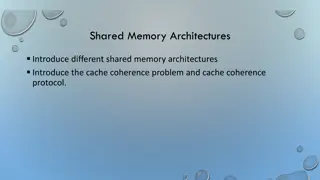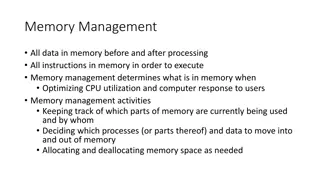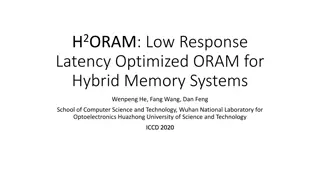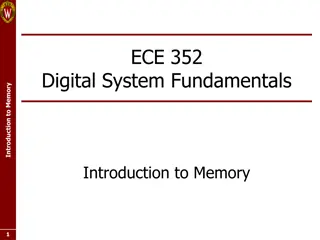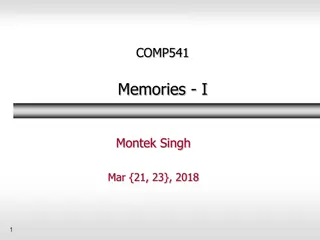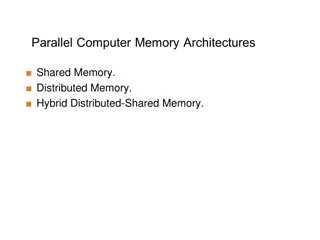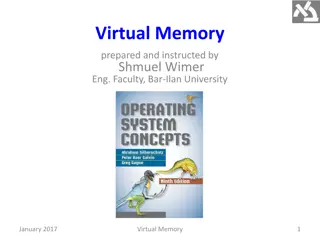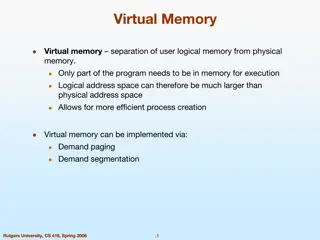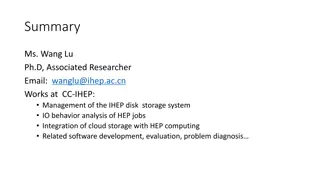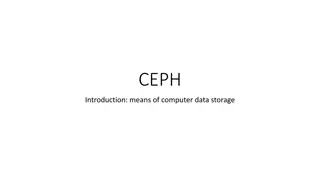Memory and Storage in Computing Platforms
Memory and storage in computing platforms play a critical role in the performance and functionality of devices. Dynamic Random Access Memory (DRAM), Mask Read-Only Memory (ROM), Programmable ROM (PROM), and Modern Flash Memory are key components discussed in this content. It delves into the functionalities, programming methods, erasability, wear leveling, and advancements in flash memory technology. Understanding the architecture and characteristics of these memory types is essential for efficient data storage and processing in digital systems.
Download Presentation

Please find below an Image/Link to download the presentation.
The content on the website is provided AS IS for your information and personal use only. It may not be sold, licensed, or shared on other websites without obtaining consent from the author.If you encounter any issues during the download, it is possible that the publisher has removed the file from their server.
You are allowed to download the files provided on this website for personal or commercial use, subject to the condition that they are used lawfully. All files are the property of their respective owners.
The content on the website is provided AS IS for your information and personal use only. It may not be sold, licensed, or shared on other websites without obtaining consent from the author.
E N D
Presentation Transcript
Lecture 5 Memory and storage Computing platforms, semester 2 Novosibirsk State University University of Hertfordshire D. Irtegov, A.Shafarenko 2019
Dynamic Random Access Memory
Mask Read-Only Memory During chip manufacturing, some rows are connected to some columns, and others are not Connected row/column read as one, disconnected as zero To some degree, mask ROM is equivalent to combinatory circuits/PLA Both take input bit string and produce output bit string PLA need less gates than equivalent ROM when most values are zero.
Programmable ROM Fuse PROM Columns and rows connected by meltable resistors (fuses) During programming, some fuses are melted by high voltage/current After that, there is no way back (you can fuse 1 bits to 0, but not 0 to 1) Erasable PROM All industrially used EPROM types are built around floating gate transistor Floating gate is charged by high voltage using quantum tunneling effect But how to discharge it? Ultraviolet erasable PROM (I really programmed those) Electrically erasable PROM (even higher voltage used to discharge all gates on the chip) Block erasable EEPROM is known as flash memory There are programmable logical gate arrays (PGA) build using same approaches
Modern flash memory Most common type of flash memory is known as NAND memory It has higher density than RAM- like circuits All EPROM devices have limited number of write cycles First generations of EEPROM had ~10 000 writes, modern flash has ~100 000 writes
Wear leveling Memory is divided to large blocks (typically several megabytes) Every block is divided to smaller pages (typically 512 bytes) Logical pages are dynamically mapped to physical pages (mapping device is not on the picture) When application writes to the page, flash controller selects an erased (free) page When page is written again, controller selects another page and marks old one as garbage When too many pages become garbage, non-garbage pages are evacuated to another block(s) and the block is erased.
More on wear leveling and garbage collection Most applications (including operating systems) do not utilize all flash memory If flash controller knows which pages are actually free, it does not need to evacuate them during garbage collection There were attempts to build filesystem-aware SSD, but eventually TRIM/UNMAP commands were introduced to SATA/SAS standards These commands allow filesystem to inform the SSD that page is no longer needed
Applications of flash memory Main program memory and non-volatile data memory in embedded and mobile devices Firmware in desktop and notebook computers Specialized flash memory cards, like SD cards Fast HDD emulators, like USB, SATA and SAS solid-state drives (SSD) NVRAM storage In desktop and notebook computers (also behaves like block storage)
Another matrix-like electronic device Liquid Crystal Display Based on liquid crystals substances that change optical properties in electric field Every element of the display is a pair of electrodes. Electrically, it is a simple capacitor Modern active matrix LCD have a transistor per element to speed up charge/discharge
Magnetic storage Most of data in the world are stored on magnetic storage, mostly hard disk drives HDD is a complex device including mechanical moving parts, analog circuits and nontrivial digital sequential logic
Logical structure of HDD storage Disk consists of several plates Every plate has two corresponding read/write magnetic heads (one per each side) Every position of the arm correspond to a track/cylinder Tracks are divided to sectors (typically 512 bytes) Sectors can be read and written only as a whole thus the term block device
Evolution of HDD controllers First generations of disks had relatively stupid controllers Disk controller had commands like: turn on motor, move head to position 20, read sector #15 Next generation of disks had complex processors with commands like: read sector from track 20, position 15 Next steps Standard interfaces, like IDE/SATA and SCSI Logical block addressing, when all surfaces and tracks were considered a linear sequence of sectors Command queuing LBA greatly simplified replacement of HDD with SSD
